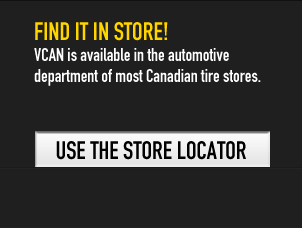Education
Most activities have their own suitable protective gear and equipment. Motorcycling is no exception. Every rider and passenger should wear over-the-ankle footwear, long pants, a long-sleeved jacket, full-fingered motorcycle gloves, and a helmet manufactured to meet DOT (U.S. Department of Transportation) standards.
Helmets work. Helmet effectiveness has been confirmed by responsible studies, while helmet myths – “helmets break necks, block vision and impair hearing” – have been consistently disproved. Safety- conscious riders wear helmets by deliberate choice every time they ride; we know that you will, too
What’s In a Helmet?
Different helmets do different things. There are hard hats on construction and heavy-industry heads; football helmets on athletes’ heads, and Kevlar® caps on military heads. None are interchangeable. Motorcycle riding helmets are very sophisticated and specialized for the activity. They’ve been developed carefully and scientifically over the years.
Four basic components work together to provide protection in the motorcycle helmet: an outer shell; an impact-absorbing liner; the comfort padding; and a good retention system.
What we see first is the outer shell, usually made from some family of fiber-reinforced composites or thermoplastics like polycarbonate. This is tough stuff, yet it’s designed and intended to compress when it hits anything hard.That action disperses energy from the impact to lessen the force before it reaches your head, but it doesn’t act alone to protect you.
Inside the shell is the equally important impact-absorbing liner, usually made of expanded polystyrene (commonly thought of as Styrofoam). This dense layer cushions and absorbs the shock as the helmet stops and your head wants to keep on moving.
Both the shell and the liner compress if hit hard, spreading the forces of impact throughout the helmet material. The more impact-energy deflected or absorbed, the less there is of it to reach your head and do damage. Some helmet shells delaminate on impact. Others may crack and break if forced to take a severe hit; this is one way a helmet acts to absorb shock. It is doing its intended job. Impact damage from a crash to the non-resilient liner may be invisible to the eye; it may look great, but it probably has little protective value left and should be replaced.
The comfort padding is the soft foam-and-cloth layer that sits next to your head. It helps keep you comfortable and the helmet fitting snugly. In some helmets, this padding can even be taken out for cleaning.
The retention system, or chin strap, is very important. It is the one piece that keeps the helmet on your head in a crash. A strap is connected to each side of the shell. Every time you put the helmet on, fasten the strap securely. It only takes of couple of seconds. To ride without your helmet secured would be as questionable as driving without your seatbelt fastened.
What’s Available for Me?
While color, design and price may be a part of your decision about which helmet to buy, think first about protection and comfort. A full- face helmet gives the most protection since it covers more of your face. It usually has a moveable face shield that protects the eyes when it is closed. Racers prefer full-face helmets for the added protection and comfort.
A three-quarter, open-face helmet is also a choice of some riders. It is constructed with the same basic components, but doesn’t offer the face and chin protection of full-face helmets. If you use an open-face helmet, you should have a snap-on face shield in place when you ride, or buy a pair of goggles that can withstand the impact of a stone or other debris. Prescription eyeglasses or sunglasses are not sufficient protection, and they might move or fly off.
A “shorty” half-helmet protects even less of your head. It is more likely to come off your head upon impact. Therefore, “shorty”, half-shell helmets are not recommended.
What you must know when choosing a helmet is that it meets minimum safety standards. The way to find a well-made, reliable helmet is to look for the DOT and/or Snell sticker on the inside or outside of the helmet. The sticker means the helmet meets the safety test standards of the U.S. Department of Transportation and/or the Snell Memorial Foundation.
Finding the Right Size
There’s more to fitting a helmet than just buying the one that matches your hat size or guessing at “small, medium or large.” However, hat size is a good starting point. If you don’t know your size, you can use the chart above. Measure your head at its largest circum- ference – usually just above your eyebrows in front, over your eyes and around in back.Try it several times so you know you’ve gotten the largest number. If your head size falls between the numbers listed, use the larger size. Most helmets are marked and sold as S, M, L or XL, so you may need to contact the manufacturer for size equivalents. Helmet sizes vary among manufacturers and model types.
The Best Way to Try on Your Helmet
- Hold it by the chin straps. The bottom of the helmet should face you with the front pointing down.
- Put your thumbs on the inside of the straps, balancing the helmet with your fingertips.
- Spread the sides of the helmet apart slightly and slip it down over your head using the chin straps.

This information has been posted with the permission of the Motorcycle Safety Foundation. Learn more at www.msf-usa.org

